
Mars is recognized by many scientists as humanity’s next point of exploration after the Moon. The next missions to our natural satellite will help build capabilities to eventually send humans to Mars.
NASA’s Jet Propulsion Laboratory (JPL) in collaboration with other space agencies around the world has been working in a new generation of Mars Explorer Rover named “Curiosity.” It launched flawlessly in a 9-month journey towards Mars on 26 November 2011 on board a United Launch Alliance Atlas V rocket.
Shortly after launch, March Science Laboratory (MSL) project manager Pete Thaisinger thanked the team at Kennedy Space Centre in Florida for a professionally smooth launch operation. He also thanked the 250 scientists at Jet Propulsion Laboratory for 10 years of work putting together this unique piece of equipment.
The panel at the post-launch conference also included John Grotzinger, Project Scientist from California Institute of Technology and Doug McCuisition, Director of the Mars Exploration programme from NASA. These representatives reminded the media that this is not a life detection mission but an intermediate mission between Mars Exploration Rover (MER) which was sent to detect water and future missions to detect life. This mission is about looking for ancient habitable environments, when circumstances in Mars were very different than what they are today; therefore, selecting the landing and exploration site was crucial for its prospects of success.
Launch of MSL on board an Atlas V Rocket
On 26 November 2011, a United Launch Alliance (ULA) Atlas V rocket launched successfully carrying the MSL.
The following two videos cover from Count-down to launch and separation of MSL.
Farewell “Curiosity,” God Speed on your 9-month journey to Mars!

The strategy to gather images will be different than that of previous rover missions. During the MER missions, scientist would receive all static images from the rovers, and from those, build a selection and decide the locations worth shooting with the panoramic camera. This time, Curiosity will take pictures and store them in a memory buffer, then only send a set of thumbnails for scientists to select a meaningful sub-set and later downlink only the chosen full resolution images. This will allow for more efficient use of the limited communication channels.
During the mission, scenarios will be carefully assessed and practice runs will be simulated on the twin version of the rover at JPL. After this training scientists will send precise commands for the execution of those complicated manoeuvres.
The cost of the programme was also discussed and the panel reasoned that this is a bargain of an investment as the cost is close to that of a modern movie, not to mention the thousands of jobs maintained and created around this endeavour. The benefits will be immense and only understood and valued by coming generations of humans. We must not forget that all the money that goes into the programme is spent on Earth, not on Mars.
Curiosity, the Rover
The name of the project is Mars Science Laboratory (MSL), an all-weather, all-terrain vehicle created with the purpose of exploring Mars looking for an answer of the age-old question: Was Mars ever capable of sustaining life?
This multinational rover was put together at the Spacecraft Assembly Facility of Jet Propulsion Laboratories in Pasadena, California. Space agencies of France, Russia, Canada and Spain built a number of instruments which form part of the payload of the vehicle.
The following list of facts provide an idea of the work involved in sending Curiosity to Mars. This is one of the most complex projects of JPL to date with surprising innovations resulting from the accumulated knowledge of the planet, aeronautics and space travel.
 MISSION: The mission of Mars Science Laboratory (MSL), aka the “Curiosity” rover, is to search areas of Mars for past or present conditions favourable for microbial life. It will search for potential locations, acquire samples, analyse them and send reports back to Earth.
MISSION: The mission of Mars Science Laboratory (MSL), aka the “Curiosity” rover, is to search areas of Mars for past or present conditions favourable for microbial life. It will search for potential locations, acquire samples, analyse them and send reports back to Earth.- DURATION OF MISSION: One Martian year, this equals to 23 Earthly months until the planetary positions re-align and the crew can return home.
- DEPARTURE: Launch is scheduled for 25 Nov 2011 from Cape Canaveral, Florida, on an Atlas V 541 vehicle (rocket).
This vehicle will place the spacecraft in orbit and use a slingshot effect to finally release it towards Mars.
The MSL is at this stage surrounded by an engine that will provide propulsion and correct direction. This section has solar panels to top-up its energy requirements.  ARRIVAL: The interplanetary journey will take eight and a half months. The expected date of arrival is 5th August 2012.
ARRIVAL: The interplanetary journey will take eight and a half months. The expected date of arrival is 5th August 2012.- LANDING: This ingenious and complex landing process aims to provide maximum protection to this new generation of rover.
The entry capsule is fitted with tiles of a new ceramic material designed to efficiently shield it from the intense heat of entry as it plummets through the Martian atmosphere towards the ground at a speed of 19,300 km/h. At this speed it would reach the surface in 5-6 minutes and probably disintegrate.
The capsule therefore needs to be slowed down.
Friction against atmospheric particles is expected to reduce the capsule’s speed to 1,600 km/h. Soon after, a large supersonic parachute is deployed to slow down the lander even further.
In the next stage called the Descent, a new aircraft, the Sky-Crane comes into operation, it will actively reduce the speed of the fall to tens of metres per second thanks to a set of 8 thrusters, which consume 400kg of propellant. The Sky-Crane then will find and hover over the landing site and slowly lower the rover with a 7.5m long bridal cable, until it touches the ground on its own wheels at a speed of 0.75m/sec. The Sky-Crane then flies away to land somewhere else completing its function.  LOCATION: The selection of the landing site is crucial to maximise the chances of finding the right soil to examine. Considering that Mars is about 1/3 the size of the Earth, with a surface area similar to that of dry land on Earth, finding the right site for landing was a mission in itself.
LOCATION: The selection of the landing site is crucial to maximise the chances of finding the right soil to examine. Considering that Mars is about 1/3 the size of the Earth, with a surface area similar to that of dry land on Earth, finding the right site for landing was a mission in itself.
After 7 years of study of images sent by previous missions, a final spot was chosen from around 50 candidates. Curiosity will touch-down on a relatively flat zone inside the “Gale Crater,” close to the equator. This crater was possibly created by flow of liquid or possibly winds, the hills surrounding the valley seem to expose strata, ideal for gathering geological samples.
There is a 5 km-high mountain nearby at the centre of the crater. The mission will attempt to climb up to the bottom 1/3 of the mountain
in 2 years, reaching areas that look like clays and sulphurs. TRAVEL ON MARS: The Mars rover is expected to travel 5 to 20 km during the mission.
TRAVEL ON MARS: The Mars rover is expected to travel 5 to 20 km during the mission.- WHO NAMED CURIOSITY?: The vehicle was named by Clara Ma, a 12-year-old student from Lenexa, Kansas after winning a Mars Science Laboratory rover-naming contest in 2009.
- BUILDING CURIOSITY: The MSL was built in a large clean room at JPL's Spacecraft Assembly Facility in Pasadena, California. In the clean rooms, all working engineers wear white "Bunny suits" that include booties and gloves to protect against Earthly contaminants. They also wear a grounding wire around the neck to prevent electrostatic discharge. Building in a clean room prevents contamination by biological particles, which may lead to false-positive results that invalidate findings. Clean rooms have a strict limit of tolerance of particles per cubic foot of air; the one at the assembly facility allows up to 10,000 particles greater than half a micron in size. To put this into perspective, a typical “non-clean” room may have 500,000 to one million particles per cubic foot of air.
- COMMUNICATIONS: Signals will be relayed by spacecraft orbiting Mars: NASA's Mars Reconnaissance Orbiter and Mars Odyssey spacecraft. In addition, messages will travel through NASA's Deep Space Network, an international network of antennas that support interplanetary spacecraft missions. Signals travelling at the speed of light (300,000 km/sec) are delayed by 10 to 20min due to the distance to Mars, which is another challenge for remote operations.
- SIZE:
 Body: This is the largest Mars rover to date, twice the size of the last rover “Opportunity” and ten time the size of “Pathfinder”. It is as large as a Mini Cooper car with a height of 2.2m, a width of 2.7m and a length of 9m. It weights 900kg. Mostly made of aluminium, its suspension and spokes are made of titanium. It has a ground clearance of 60cm. The core structure is approximately 1 meter wide and long.
Body: This is the largest Mars rover to date, twice the size of the last rover “Opportunity” and ten time the size of “Pathfinder”. It is as large as a Mini Cooper car with a height of 2.2m, a width of 2.7m and a length of 9m. It weights 900kg. Mostly made of aluminium, its suspension and spokes are made of titanium. It has a ground clearance of 60cm. The core structure is approximately 1 meter wide and long.- Arm: Curiosity is fitted with a single 2.2m long arm designed to manoeuvre a 30kg Turret.
Located on the front panel, the arm provides the dexterity required to acquire material and feed it to the lab. It was constructed by the same Canadian company that made the arms of previous rovers.  Turret: This conglomerate of instruments contains drilling and collecting tools. The drill head is of Rotary-Percussive or Hammer-Drill type and is designed to drill holes of up to 5cm in depth and collect the dust from the centre and the periphery of the hole. In case of a broken or jammed drill-bit, it can drop the bit and replace it with another; it carries 2 spare drill-bits.
Turret: This conglomerate of instruments contains drilling and collecting tools. The drill head is of Rotary-Percussive or Hammer-Drill type and is designed to drill holes of up to 5cm in depth and collect the dust from the centre and the periphery of the hole. In case of a broken or jammed drill-bit, it can drop the bit and replace it with another; it carries 2 spare drill-bits.
If biological material were found, the rover has 5 red tiles of Organic-Check-Material, which are biologically-free blocks that can be drilled to compare results and rule out false-positives resulting from biological material being carried from Earth.- Wheels: The 6 wheels of Curiosity are made of aircraft-grade aluminium, they are 50.8 cm in diameter and 50cm in width. Each wheel has 1.27cm thread dents and holes that leave imprints in the soil for visual odometry. The rover has a wheel-base of 2.26m.
The solid wheels were designed to roll over obstacles of up to 75cm in height. Aluminium was chosen because it is a strong, yet light material that can tolerate denting without impact to driving ability. - Capability: Top speed of 140metres/h. One horsepower. Its torque or ability to drive up slopes is 3000 ft/lb (500 ft/lb on each wheel, similar to that of an average car per wheel), this is very high because the vehicle will operate in very low temperatures of -10 to -26 Centigrade (-50 -80 F). Curiosity will travel at a very low speed but with a lot of power being able to drive up 30 degree slopes.
 POWER SOURCE: Unlike its predecessors that use solar panels, Curiosity has a Radioisotope Thermoelectric Generator (RTG) built by Boeing, which uses the heat generated by the natural decay of a small amount of Plutonium-238 and converts it to electricity. It generates about 110Watts of power continuously recharging a 40Amp battery. Plutonium’s capacity to generate energy is expected to decay in decades.
POWER SOURCE: Unlike its predecessors that use solar panels, Curiosity has a Radioisotope Thermoelectric Generator (RTG) built by Boeing, which uses the heat generated by the natural decay of a small amount of Plutonium-238 and converts it to electricity. It generates about 110Watts of power continuously recharging a 40Amp battery. Plutonium’s capacity to generate energy is expected to decay in decades.
Other spacecraft that use similar power source are: Vikings, Cassini, Voyager.
The excess heat is used to warm up the vehicle through a network of heat exchangers or pipes, which can also be used to remove heat should it become too hot. The pipes contain Freon that circulates thanks to a pump to control the temperature, heating-up or cooling down the rover when needed.
SCIENCE PAYLOAD
- Cameras
 Mast Camera (Mastcam): Two cameras for stereo imaging mounted on the Remote Sensing Mast: Telephoto, colour and video.
Mast Camera (Mastcam): Two cameras for stereo imaging mounted on the Remote Sensing Mast: Telephoto, colour and video.- Mars Hand Lens Imager (MAHLI): A magnifier tool capable of looking at samples in colour even in the dark using ultraviolet light. This is mounted on the end of the arm.
- Mars Descent Imager (MARDI): This camera will be activated shortly after the separation from the heat shield. It will take colour High Definition images at 5 frames per second all the way to the surface. After landing it is turned off and remain available in case it is required later. Some of the images acquired will be sent to Earth within the first 2 weeks and in a few months all the images will arrive to create a movie sequence of entry and descent.
- Spectrometers
- Alpha Particle X-Ray Spectrometer (APXS) (in collaboration with Canada): Bombards a sample with Alpha particles or X-Rays to determine its composition.
- Chemistry & Camera (ChemCam) (in collaboration with France): A 2-piece instrument, one with a telescope. Uses a high power laser from 5m away that vaporizes the outer surface of the rock, then the camera's spectrometer analyses the resulting cloud of plasma to determine its chemical composition, this triage process singles out the interesting rocks to approach for sampling. A similar instrument is used on Earth to detect lead contents of wall paint.
 Chemistry & Mineralogy X-Ray Diffraction/X-Ray Fluorescence Instrument (ChemMin): This is an X-Ray diffraction pattern detector that processes samples to find component minerals. It vibrates the samples to operate.
Chemistry & Mineralogy X-Ray Diffraction/X-Ray Fluorescence Instrument (ChemMin): This is an X-Ray diffraction pattern detector that processes samples to find component minerals. It vibrates the samples to operate.- Sample Analysis at Mars (SAM) Instrument Suite: Looks for Organic molecules from collected samples. This will find out if there are traces of past microbial life by searching for chemical isotopes generated by biological processes. It also looks for methane, commonly produced by biological processes rather than chemical ones. This is very sensitive, capable of detecting methane in parts per trillion and can find even methane produced on the other side of the planet. This is the largest instrument on the rover, the size of a microwave oven. The samples are processed in a small oven that heats them up to 1000 degrees, which removes all volatile substances before they are passed to other instruments.
- Radiation Detectors
 Radiation Assessment Detector (RAD): A radiation detector with dual purpose: It defines the radiation in the environment at the moment of measurement and calculates long-term patterns for future missions.
Radiation Assessment Detector (RAD): A radiation detector with dual purpose: It defines the radiation in the environment at the moment of measurement and calculates long-term patterns for future missions.- Dynamic Albedo of Neutrons (DAN) (in collaboration with Russia): Detects sub-surface Hydrogen by bombarding the surface with a neutron generator and looks at reflected neutrons. Its purpose is to find Hydrogen or Water under the surface.
- Environmental Sensors
- Rover Environmental Monitoring Station (REMS) (in collaboration with Spain): A weather station that detects atmospheric pressure, temperature, wind speed and direction and other meteorological measurements that will report back to earth in the future. These are mounted on booms or masts. Includes a UV detector.
- Atmospheric Sensors
- Mars Science Laboratory Entry Descent and Landing Instrument (MEDLI): Determines atmospheric conditions and performance of the MSL during entry.
ChemMin and SAM analyse samples inside the rover
Pulverised samples are fed to a disk-shaped transparent chamber, of which various pairs are ready to rotate into position. The instruments analyse the material using X-Ray diffraction and determine patterns that represent chemical elements.

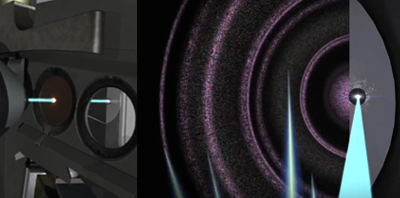
Watch the animation from Jet Propulsion Laboratory
Building the Mars Science Laboratory
The MSL Curiosity was built in a clean room at JPL's Spacecraft Assembly Facility. See the engineers wearing white "Bunny suits" to protect the rover from Earthly contaminants.



Curiosity Rover on Mars
In 2012 the Mars Science Laboratory “Curiosity” will rover on Mars, seeking chemical evidence of life and attempting to answer many scientific questions for the advancement of humanity into space.




Humans on Mars
In preparation to humans visiting Mars, NASA is planning on building capabilities that exceed those achieved by the Apollo programme. They will first send 4 people to the Moon for gradually longer stays, starting with one week and gradually progressing to up to 6 months.
When all the problems about living on an extra-terrestrial environment are solved in a near base like the Moon, which is only 3 days away, the next step will be a manned mission to Mars.
As stated by Richard Gilbrech (Associate Administrator for Exploration System, NASA) in 2008, initial missions to Mars are anticipated to take 3 crew astronauts in a 30 month mission. Starting with a 6 month journey, followed by a required 18 months stay on the surface until the planets align and the mission can embark on a similar length of journey back to Earth.
From this point of view, the International Space Station and the Moon are experiments to build capabilities for longer missions. They will require a global enterprise with immense investments of time, people and money.
On this mission, an unprecedented 1 ton of equipment will be landed on another planet. It is expected that by the time a human mission arrives in Mars, the volume of equipment required to land will have a weight of 40 to 60 tonnes; so far we do not have the technology to handle that weight.
Humans on Mars
Humans will eventually arrive in Mars and expand the horizons of space exploration.


References
¤ ‘The Moon and Mars - the next destinations for humans’ (2008). The 59th International Astronautical Congress, Glasgow, Scotland. [Online]. Available here. (Accessed: 06 November 2011).¤ ‘Curiosity Rover, FAQ’ (2011). JPL. [Online]. Available here. (Accessed: 06 November 2011).
¤ Richard Cook ‘Mars Science Lab Curiosity’ (2011). Theodore von Karman Lecture Series at JPL. [Online]. Available here. (Accessed: 06 November 2011).
¤ ‘Mars Science Laboratory Curiosity Rover Animation’ (2011). JPL. [Online]. Available here. (Accessed: 07 November 2011).
¤ ‘Mars Science Laboratory Lifts Off for Red Planet’ (2011). JPL. [Online]. Available here. (Accessed: 27 November 2011).
¤ ‘MSL's Mars Trajectory Confirmed During Post-Launch Briefing’ (2011). JPL. [Online]. Available here. (Accessed: 27 November 2011).
¤ ‘MSL Atlas Launch MECO + Separation NASATV HD mars 11/26/2011’ (2011). JPL. [Online]. Available here. (Accessed: 27 November 2011).
¤ Vasavada, A (2011). ‘Mars Rover Power’ JPLnews. [Online]. Available here. (Accessed: 16 November 2011).
¤ ‘JPL Rovers’ (2011). JPL. [Online]. Available here. (Accessed: 06 November 2011).
¤ ‘Animation improvements’ (2011). Aniden. [Online]. Available here. (Accessed: 06 November 2011).
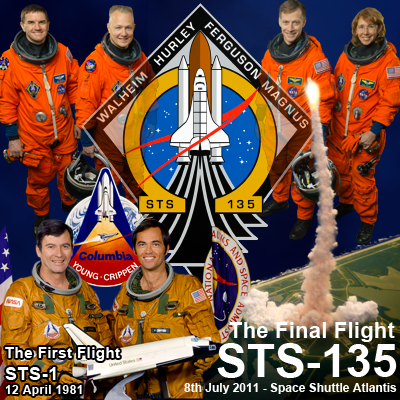 Space Shuttle Atlantis is the last orbital vehicle of a fleet of five spacecraft that form part of NASA’s 30-year Space Shuttle Programme. The other orbiters are: Columbia, Challenger, Discovery and Endeavour. The first two lost in fatal accidents that highlight the dangers that the programme has to face at every stage of its performance.
Space Shuttle Atlantis is the last orbital vehicle of a fleet of five spacecraft that form part of NASA’s 30-year Space Shuttle Programme. The other orbiters are: Columbia, Challenger, Discovery and Endeavour. The first two lost in fatal accidents that highlight the dangers that the programme has to face at every stage of its performance. Transport of “Raffaello,” the multi-purpose logistics module (MPLM), filled with 9 tonnes of supplies, experiments and spare parts for the ISS. A combined effort of NASA (National Aeronautics and Space Administration) and ASI (Agenzia Spaziale Italiana). This unit acts as a “moving van” to ferry cargo back and forth to the station. The crew will bring back debris and material no longer required at the station.
Transport of “Raffaello,” the multi-purpose logistics module (MPLM), filled with 9 tonnes of supplies, experiments and spare parts for the ISS. A combined effort of NASA (National Aeronautics and Space Administration) and ASI (Agenzia Spaziale Italiana). This unit acts as a “moving van” to ferry cargo back and forth to the station. The crew will bring back debris and material no longer required at the station.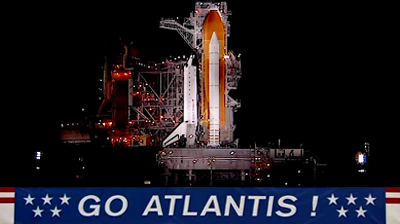 The crew of STS-135 will support a spacewalk carried out by members currently stationed at the ISS.
The crew of STS-135 will support a spacewalk carried out by members currently stationed at the ISS. During the 6.5 hour spacewalk the astronauts will retrieve the failed pump module, install the Robotic Refuelling Mission experiment and deploy materials for another experiment.
During the 6.5 hour spacewalk the astronauts will retrieve the failed pump module, install the Robotic Refuelling Mission experiment and deploy materials for another experiment. After a flawless docking to the ISS, the 12th of Shuttle Atlantis, the crew of astronauts were welcomed by their colleagues at the station.
After a flawless docking to the ISS, the 12th of Shuttle Atlantis, the crew of astronauts were welcomed by their colleagues at the station.


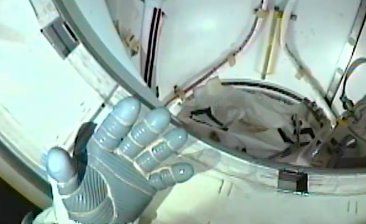




 Seven days after docking to the space station the astronauts on board ISS got together for a farewell ceremony before preparation for undocking.
Seven days after docking to the space station the astronauts on board ISS got together for a farewell ceremony before preparation for undocking.




 Two separation burns moved the Shuttle away from the ISS and closer to our planet. The crew then made another stop to inspect the heat shield for damage that might have occurred while docked to the station.
Two separation burns moved the Shuttle away from the ISS and closer to our planet. The crew then made another stop to inspect the heat shield for damage that might have occurred while docked to the station.



 Early morning on Thursday, 21st July 2011, Atlantis proceeded with the final de-orbit burn to slow down the spacecraft, which is done with the spacecraft moving backwards. Then it turned around and lifted the nose to expose the thermal shield to the zone of most friction as it entered the atmosphere. At that point, the heat shield was put to test when temperatures around the Shuttle -reached 13,800 degrees Celsius (25000 F).
Early morning on Thursday, 21st July 2011, Atlantis proceeded with the final de-orbit burn to slow down the spacecraft, which is done with the spacecraft moving backwards. Then it turned around and lifted the nose to expose the thermal shield to the zone of most friction as it entered the atmosphere. At that point, the heat shield was put to test when temperatures around the Shuttle -reached 13,800 degrees Celsius (25000 F).

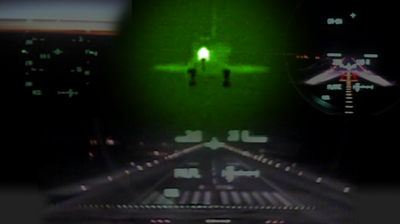
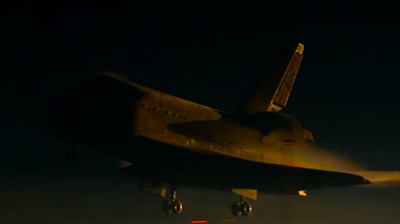
 The Space Shuttle Atlantis was the fourth Orbiter Vehicle designed by the company Rockwell International in 1985. Since then it has served the programme in a large number of achievements and number first in the following:
The Space Shuttle Atlantis was the fourth Orbiter Vehicle designed by the company Rockwell International in 1985. Since then it has served the programme in a large number of achievements and number first in the following: 1990, 2 missions to deliver satellites for the Department of Defence: The Misty reconnaissance satellite and a secret Magnum ELINT (ELectronic INTtelligence) gathering satellite.
1990, 2 missions to deliver satellites for the Department of Defence: The Misty reconnaissance satellite and a secret Magnum ELINT (ELectronic INTtelligence) gathering satellite.
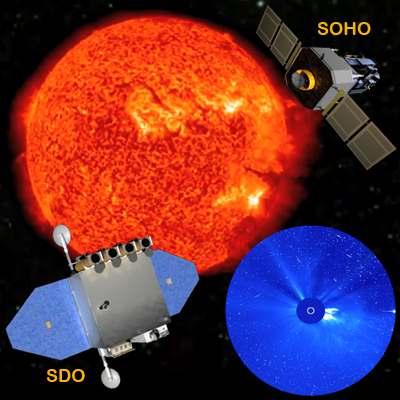 Is the Sun waking up from “The Quiet Before The Storm” as we get closer to the “Unprecedented Solar Storm” predicted by NASA for 2012?
Is the Sun waking up from “The Quiet Before The Storm” as we get closer to the “Unprecedented Solar Storm” predicted by NASA for 2012?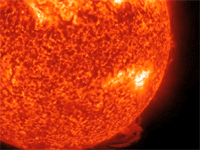 In March of the same year, the National Aeronautics and Space Administration (NASA) published an official warning as they predicted a burst of activity for the end of 2012, more than 50 years after the largest recorded storm.
In March of the same year, the National Aeronautics and Space Administration (NASA) published an official warning as they predicted a burst of activity for the end of 2012, more than 50 years after the largest recorded storm. Studies of the Sun’s behaviour have shown that it has an 11-year cycle of sunspots in addition to a conveyor belt of electrically conducting gas that flows in a loop from the Sun’s equator to its poles. This conveyor belt takes between 30 to 50 years to circulate and as it flows, it refreshes the appearance of periods of sunspots. The belt was turning relatively fast between 1986 and 1996, calculations since then point to an increase in surface activity between 2011 and 2013.
Studies of the Sun’s behaviour have shown that it has an 11-year cycle of sunspots in addition to a conveyor belt of electrically conducting gas that flows in a loop from the Sun’s equator to its poles. This conveyor belt takes between 30 to 50 years to circulate and as it flows, it refreshes the appearance of periods of sunspots. The belt was turning relatively fast between 1986 and 1996, calculations since then point to an increase in surface activity between 2011 and 2013.

 Mission STS-134 departed on board the Space Shuttle Endeavour early Monday morning. They plunged into the cloudy sky on their way to the International Space Station.
Mission STS-134 departed on board the Space Shuttle Endeavour early Monday morning. They plunged into the cloudy sky on their way to the International Space Station.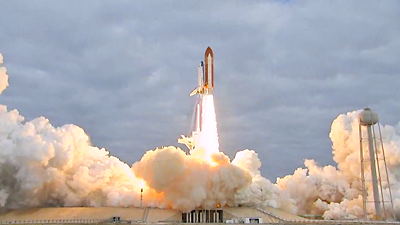
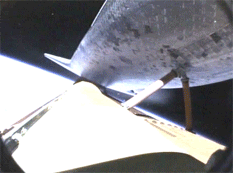 Travelling vertically at 2000 km/h, by the time the spacecraft reached an altitude of 24km, it had lost half of its original 2000 tons of weight, solely by burning propellant at a rate of 5000 kg/sec.
Travelling vertically at 2000 km/h, by the time the spacecraft reached an altitude of 24km, it had lost half of its original 2000 tons of weight, solely by burning propellant at a rate of 5000 kg/sec.



 The mission
The mission One of the most important goals of this mission was to install the Alpha Magnetic Spectrometre (AMS 2) onto the ISS. A particle physics detector that will help advance studies of the origins of the universe searching for antimatter, dark matter and measuring cosmic rays. The program extends up to 18 years using the space station’s unique position as an observation post.
One of the most important goals of this mission was to install the Alpha Magnetic Spectrometre (AMS 2) onto the ISS. A particle physics detector that will help advance studies of the origins of the universe searching for antimatter, dark matter and measuring cosmic rays. The program extends up to 18 years using the space station’s unique position as an observation post.















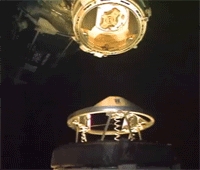 Meanwhile, at the ISS; the Orbital Boom Sensor System that was part of the Space Shuttle was transferred and installed onto the space station, changing its name to ISS Boom Assembly. Three additional space walks were conducted to complete repairs and maintenance and on mission day 12, the space station assembly was declared complete after 12 years of work. A pinnacle of human achievement with 15 countries working together for a common future.
Meanwhile, at the ISS; the Orbital Boom Sensor System that was part of the Space Shuttle was transferred and installed onto the space station, changing its name to ISS Boom Assembly. Three additional space walks were conducted to complete repairs and maintenance and on mission day 12, the space station assembly was declared complete after 12 years of work. A pinnacle of human achievement with 15 countries working together for a common future.











 Endeavour was named through a national schools competition. The winners, Sanatobia Middle School in Mississippi, selected the name of the ship of illustrious 18th century British explorer Captain James Cook.
Endeavour was named through a national schools competition. The winners, Sanatobia Middle School in Mississippi, selected the name of the ship of illustrious 18th century British explorer Captain James Cook. Before the launch, the tradition is that astronauts have a meal with their families at Kennedy Space Centre. Their children write messages to their parents, which are framed and exhibited at the centre. Spouses exchange rings, usually worn by the astronauts in a necklace during the mission.
Before the launch, the tradition is that astronauts have a meal with their families at Kennedy Space Centre. Their children write messages to their parents, which are framed and exhibited at the centre. Spouses exchange rings, usually worn by the astronauts in a necklace during the mission.
